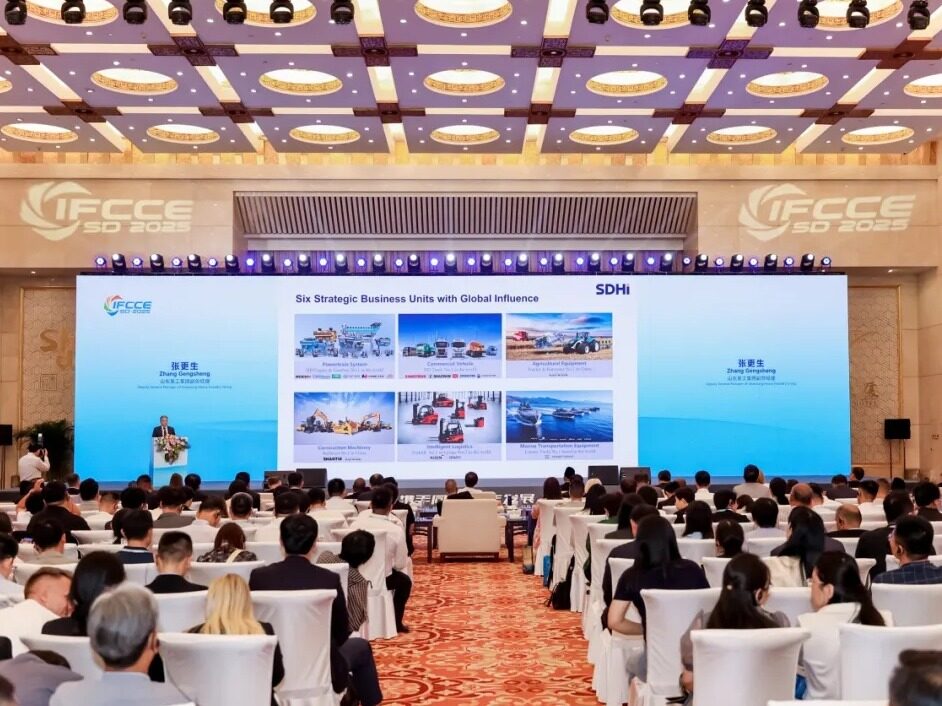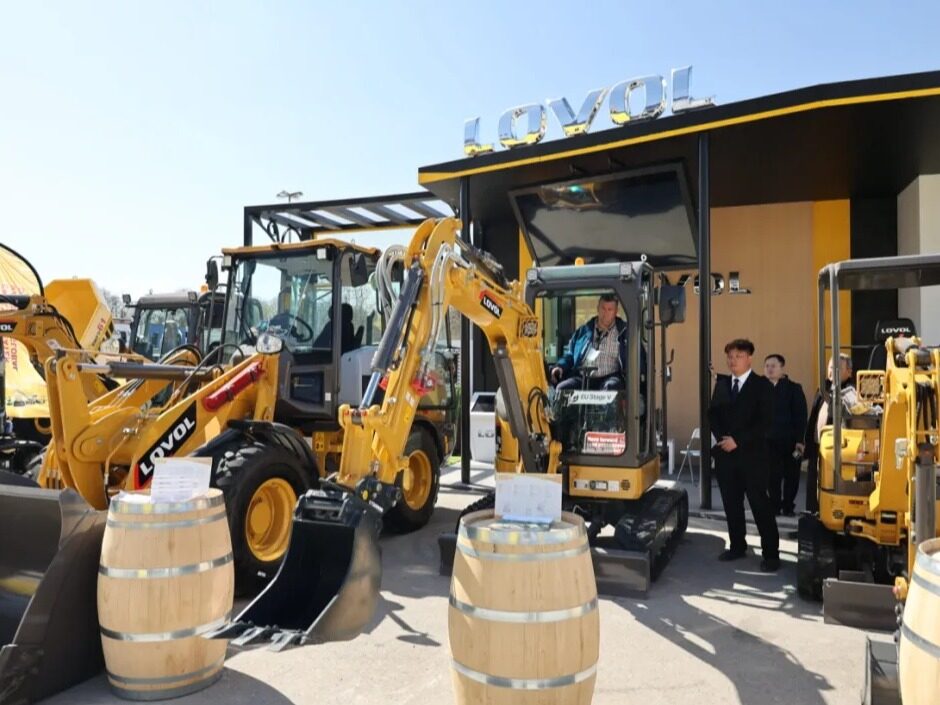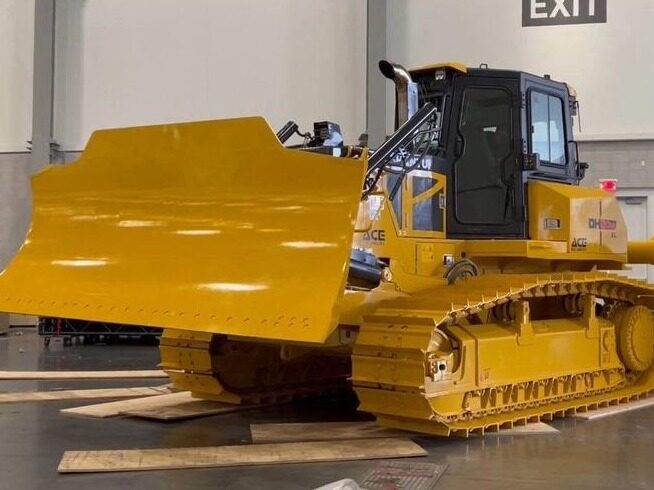
- The expanding cooperation between Mauritania and China will inject new impetus to the development and prosperity of Mauritania
Drive east from Nouakchott, the capital of Mauritania, farther and farther from the sea, and closer and closer to the Sahara, the world's largest desert. Driving about 60 kilometers, at the edge of the desert, there is an "oasis" : nearly a thousand acres of green crops are growing vigorously, rows of sprinkler poles spray spray. This is the China-assisted Mauritanian Animal Husbandry Technology Demonstration Center.
Covering an area of 110 hectares, the demonstration center, planting area, breeding area, forage processing workshop, training area, etc. Since the pilot operation of the Center in 2016, planting, breeding and training have been carried out in an orderly manner, which has contributed to the development of animal husbandry and agriculture in Mauritania.

Aerial photo of alfalfa field of Mauritania animal husbandry technology demonstration center assisted by China
With the support of Chinese technical experts, the once barren land has been turned green. Since 2017, the center has successively realized the large-scale production of forage crops and the first embryo transfer cow breeding, which has trained a large number of animal husbandry professionals for Maota. "Chinese experts have created miracles in the vast desert, helping more Maota people to get rich," said Buhe Ahaimadu, secretary general of rural development department of Maota at the time.
Forage introduction to achieve large-scale planting
Animal husbandry is one of the pillar industries of Maota, but because more than 80% of the land is covered by desert, and the dry season lasts for nine months every year, the grass is often eaten up by livestock less than two months into the dry season, and the grassland desertification is increasingly serious, and the feeding demand of livestock is difficult to meet. How to cultivate and plant forage crops on a large scale in the desert has become the key to the sustainable development of animal husbandry in Maota.
"Look, the purple flowers are in bloom, and this clover is ready for harvest." In the planting area, several local workers were weeding in the field, and they introduced the alfalfa to the reporter. Alfalfa is a kind of forage crops, high protein content, known as the "king of forage". In April 2017, the first crop of alfalfa was successfully sown in Medicago Medicago Demonstration Center. The growing period of each crop was 28 to 30 days, and 12 crops could be harvested throughout the year, with an average annual output of more than 3 tons of dry alfalfa per mu. The large-scale cultivation of alfalfa has found the key to solve the problem of balance between grass and livestock.
Natural conditions such as high temperature, drought and little rain brought many difficulties to the introduction experiment. "Sometimes alfalfa seedlings just grow up, and the sun is baked and withered" "often have to squat in the ground to observe the situation of pests and diseases, face is dry and cracked"...... Renxueshan, a retired researcher from Ningxia Grassland Workstation, was filled with emotion when he recalled the process of introducing seeds in the demonstration center.
"Wind and sand wash the sun and moon, fire alms the heart." A pair of couplets in the center of demonstration illustrates the hardships and persistence of Chinese experts. After trying to plant 21 kinds of forage grasses and carrying out a comparison test on six varieties of alfalfa, Ren Xueshan finally found a variety suitable for the local climate and soil conditions. The use of fixed high-pole sprinkler irrigation, fixed micro-spray and sprinkler irrigation belt and other water-saving irrigation methods, the use of cattle and sheep manure and other organic fertilizers to improve the soil, scientific formulation of fertilization programs...... Through a combination of techniques, the desert has finally produced green grass.
In March 2018, when the then Maauta President Shaukat Aziz visited the CEE and saw patches of alfalfa, he bent down, grabbed the sand at his feet with his hands, and exclaimed, "This is still the same sand, how did you do it?"
At present, alfalfa cultivation has been extended to several areas such as Benny Sharp Farm, Mauta Rural Development Department, and the National Wildlife Park. Attracted by the results, an Emirati agricultural company investing in Maota has also planted 50 hectares of alfalfa and plans to expand to 300 hectares.
To thank Chinese experts for their efforts in promoting the standardized and large-scale cultivation of alfalfa over the years, the Maota government awarded Ren Xueshan the National Contribution Medal in December 2019. Silage corn, sweet sorghum, Sudan grass, kordan grass, oat and other forage varieties introduced by the demonstration center, as well as woody fodder such as caragana korskii, cassava and moringa seed, are now being popularized and applied.
Improved breeding improves milk yield of dairy cows
In the late afternoon, workers bring bales of dried alfalfa grass to the farm, and more than 400 cows scramble to stick their heads out of their collars, ready for a feast. "We also add some weeds, mixed with protein-rich alfalfa, 'meat and vegetable', so that the cow will grow well." A local worker tells a reporter quite experience ground.
With sufficient feed, Chinese experts began to adjust the dietary formula of the cattle to improve the nutritional level, laying the foundation for the demonstration center to carry out improved breeding work. In November 2018, Maota's first embryo transfer cow was born here. Zhang Hongen, head of the center's expert group, said the average daily milk yield of locally raised cows is 2.5 liters, and the average milk yield of newly bred cows is 5 to 10 times that of local breeds, and they are fully adapted to the local natural environment. Localisation of such breeds would change the 70 per cent dependence on imports for the local dairy market. So far, the center has bred more than 50 calves with embryo transfer and 270 crossbred and improved calves.
Local enterprises and farmers came to visit the demonstration center in an endless stream. The Ministry of Rural Development of Maota sent several groups of officials and key farmers to attend the training. Over the past three years, the Demonstration Center has trained more than 1000 people, including forage planting and processing, forage field management, modern cowshed management, cow breeding and other directions. Graduates are sent around the country to promote Chinese technology, benefiting more farmers.
Mohammed Ahmed, who was trained at the demonstration center and is now the head of the dairy cow improvement station in Maota's rural development department, is known as the "good hand" for his technical skills. "I'm really happy that the improved cows are producing a lot more milk and the farmers' lives are better," he said.
CEE has also organized several training trips to China for Maota students. Ahmad has been to Ningxia to participate in the standardized management of breeding and practical technology training. "The practical knowledge I have learned from Chinese technical experts is exactly what the Maota people need," he says. "I will try to assimilate it and apply it in practice so that farmers and herdsmen can learn the technology and increase production and income."
Mutually-beneficial cooperation has injected new impetus into development
The Center of Excellence has also made a name for itself in neighboring countries. President Barrow of the Gambia made a special inspection trip and hoped that Chinese experts could spread these technologies to West Africa and North Africa so as to benefit more African herdsmen.
There are also workers from Mali, Sierra Leone, Ghana and other African countries to study in the demonstration center. Amadou Gala, a 25-year-old Malian worker who manages a cattle farm and treats cattle diseases at the demonstration center, wants to learn about embryo transfer techniques. "I can help more people by following Chinese experts to learn real skills and then coming back to Mali to start my own business," he says.
During the epidemic prevention and control period, at the request of the Ministry of Rural Development of Maota, the Center held two training sessions. "As the situation improves, we will gradually resume overseas training and continue to bring China's technology and experience in poverty reduction to the benefit of more local people." "Mr. Zhang said.
In the small vegetable garden of the demonstration center, workers have planted more than 50 kinds of fruits and vegetables. In the life management area, the grass is green and the flowers are blooming. The garden-style park is popular with local residents. Before the outbreak, the center was open to the public every weekend, providing a place for people in the desert to relax and develop friendship between the Chinese and Maoist people here.
Farmer Mai Mai often tells the story of her family and China. In the 1970s, Mai Mai's husband was part of a Chinese-assisted construction team that dug 18 Wells in the desert for water, and they are still an important source of drinking water for Nouakchott. "The Chinese friends who helped us dig Wells, build ports, build roads and now help us develop animal husbandry are household stories," Mai Mai said. "Mao Zhong is a friend forever."
On the map of Mao Pagoda, you can see the "coordinates" of the achievements of China-Mao cooperation. On the Atlantic side, the China-Mao Friendship Port is the second largest project assisted by China in Africa. More than 60 kilometers away from Nouakchott, the Tanit Fishing Port built by Chinese enterprises has ended the history that there was no dedicated fishing dock in Mauta and greatly improved the efficiency of fishing production. In the Senegal River valley to the south, Chinese experts are helping to improve rice varieties and guide pest control. Deep in the desert, the Maota government is planning to "replicate" four animal husbandry technology demonstration centers across the country...
"Technology from China has opened the door for the Maota people to get rid of poverty and become rich." Ahaimai visited Ningxia in September 2019 and was deeply touched by the story of hundreds of millions of Chinese people lifting themselves out of poverty. He hopes that such experience can be introduced to Africa more often: "We welcome more experts and technologies from China. The continuous expansion of Mao-China cooperation will inject new impetus into the development and prosperity of Mao-Pagoda." (Reprinted please indicate Jiandao website www.seetao.com) Jiandao website video column editor/Gan Linping
Comment
 Praise
Praise
 Collect
Collect
 Comment
Comment
 Search
Search














Write something~